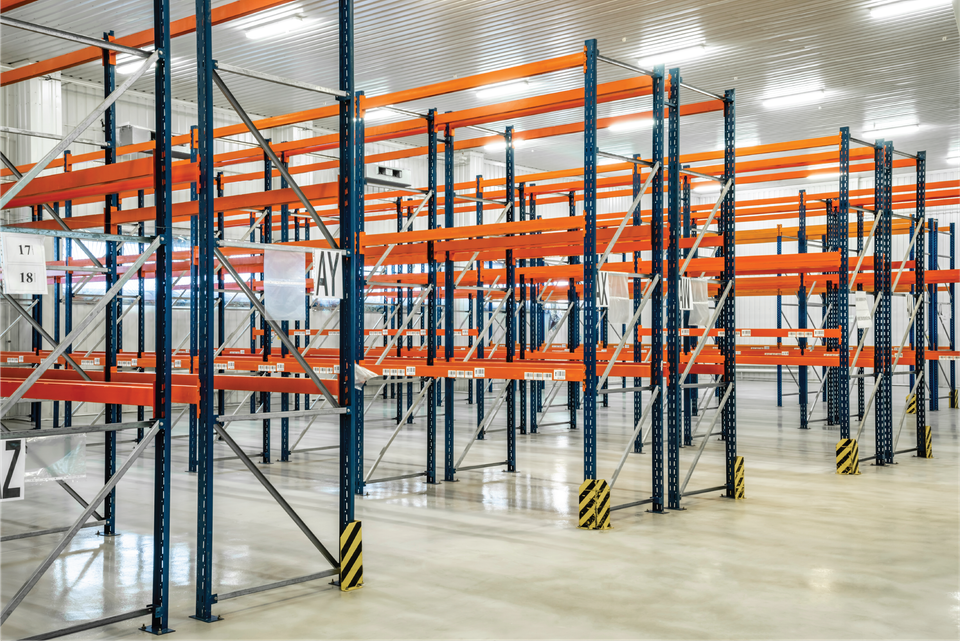Efficiency is the enemy of chaos. What happens if you optimize your storage space for efficiency?
Lowered Storage Costs: When your storage is organized effectively, you reduce the amount of physical storage space you need. This translates to lower costs for things such as:
- Buying or renting storage units. If you're using a warehouse efficiently, you won't need as much space. Oftentimes this means going vertical, so you can fully use a three-dimensional space.
These costs can be lowered further by building or purchasing your own warehouse space, after which you can eliminate rent from your expenses. If you don't already own your own storage space, it would be worthwhile to look at the possibility of building one.
- Energy usage to power and cool storage facilities. The power needed to run one or more warehouses is another factor of cost. When you use less space, and invest in energy-efficient warehouse infrastructure, less power is needed for your facility. As an additional benefit, using space and power efficiently reduces your environmental impact.
- Time costs. The time spent on finding and getting to inventory, tools, and paperwork costs money just as everything else in running a business.
Improve Accessibility Through Organization: With efficient storage, you can pack more items into a smaller space while still being able to find and access them easily.
The bottom line here is that efficient storage saves time and frustration for workers trying to locate any given item. This doesn't just save you money, as discussed above; it improves overall morale, and customers appreciate a company that runs smoothly.
Now keep in mind that organizing for efficiency is different from just organizing or cleaning. Everything being put away in a box on a shelf doesn't make it easy to find, or easy to access. Efficient organization results in both of these things.
Furthermore, the systems that should be applied for efficiency vary on a case-by-case basis. Your space, what the storage is for, and the people in your organization all affect what tools and methods will and will not increase efficiency for you.
Increase Warehouse Safety: Efficient storage practices minimize clutter and create designated spaces for items. This plays a crucial role in enhancing workplace safety within warehouses and other storage facilities. Warehouse safety is improved when you have:
Reduced Trip and Fall Hazards -
- Clear Aisles and Walkways - By keeping aisles and walkways clear of clutter and debris, you significantly reduce the risk of workers tripping and falling. Efficient storage creates designated areas for items, preventing them from spilling over into walkways or hanging precariously off of shelves.
- Organized Stacking - Proper stacking techniques, like using weight limits and following a first-in-first-out (FIFO) system, prevent items from becoming unstable or toppling over and causing injuries.
Improved Accessibility and Visibility -
- Easy Retrieval - When items are stored efficiently and labeled clearly, workers can locate and access them quickly without straining or disregarding their safety.
- Line of Sight - Efficient storage layouts avoid obstructing walkways and blind corners. Workers can maintain clear lines of sight, preventing collisions with forklifts or other moving equipment.
Safer Material Handling -
-
Designated Storage Locations - By having dedicated storage areas for different types of materials, you can avoid unsafe mixing of hazardous materials or incompatible items that could react negatively.
- Weight Distribution - Efficient storage practices ensure proper weight distribution on shelves and racks. This prevents overloading, which can lead to structural collapse and potential injuries.
- Ergonomic Practices - Efficient storage layouts can be designed to minimize awkward lifting or reaching movements. This reduces the risk of musculoskeletal disorders (MSDs) from repetitive strain.
Promoting a Safe Work Culture -
- Organized Workplace - A well-organized and efficient storage environment fosters a culture of safety in the workplace. When workers see a commitment to proper storage procedures, they are more likely to prioritize safety themselves. It is also much easier to expect workers to maintain an organized area than essentially ask each employee to fend for themselves in this regard.
- Clear Communication - Efficient storage often involves clear labeling and signage for items and weight capacities. This promotes better communication about safety protocols and potential hazards.
By implementing these efficient storage practices, you can create a safer working environment for your employees, reducing the risk of accidents, injuries, and downtime. It's a win-win situation, leading to improved employee well-being and can potentially lower worker's compensation costs.
Storage for Flexibility and Scalability:
Efficient storage allows you to adapt to changing needs. With a well-organized system, you can easily add more storage within the existing space if your needs grow, and remove what is not being used or is no longer useful.
- Modular Systems - Efficient storage often utilizes tools like boltless shelving, mobile shelving, and mezzanines. These allow for easy adjustments and additions as your inventory or product lines fluctuate. You can expand storage capacity within the existing space without major renovations.
- Multi-Level Storage - Efficient layouts maximize vertical space, and will utilize areas like walls for shelving. Using your vertical space can allow you to adapt storage to accommodate new product types or changing inventory levels.
- Multi-Purpose Storage - Unless your business is specialized and only needs to store certain items, like logs or reams of paper, you will probably want shelving units that can be used for a variety of tools and inventory.
A Warehouse Supplier for Your Efficiency Needs
If you've been letting your storage spaces become disorderly, now is the time to course correct. JS Rack & Supply is here and ready to help, with an extensive catalog of storage solutions. We are based in Estacada, OR but we also serve customers nationally. Get in touch with JS Rack & Supply today online or call us for local service to Portland, OR at (503) 233-7791 and reach us in Ontario, OR, at (503) 233-7791.

